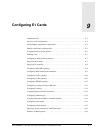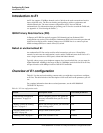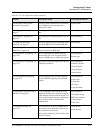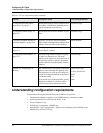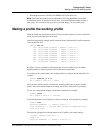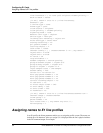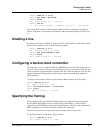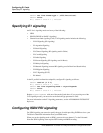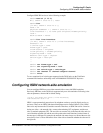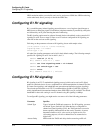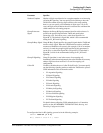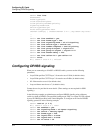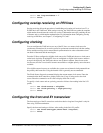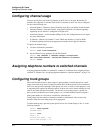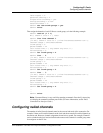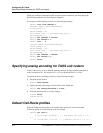
Configuring E1 Cards
Configuring ISDN network-side emulation
APX 8000/MAX TNT/DSLTNT Physical Interface Configuration Guide Preliminary May 9, 2000 9-9
Configure ISDN PRI service as in the following example:
admin>read e1 {1 15 5}
E1/{ shelf-1 slot-15 5 } read
admin>list
[in E1/{ shelf-1 slot-15 5 }]
name = ""
physical-address* = { shelf-1 slot-15 5 }
line-interface = { no none g703 eligible middle-priority
isdn +
back-to-back = false
admin>list line-interface
[in E1/{ shelf-1 slot-15 5 }:line-interface]
enabled = no
t-online-type = none
frame-type = g703
clock-source = eligible
clock-priority = middle-priority
signaling-mode = isdn
default-call-type = digital
switch-type = net5-pri
..
..
admin> set frame-type = esf
admin> set signaling-mode = isdn
admin> set switch-type = switchtype
admin> set channel 17 channel-usage=d-channel
admin> write
To see a complete list of switch types supported on the TAOS unit, see the TAOS unit
command-line interface online help or the APX 8000/MAX TNT/DSLTNT Reference.
Configuring ISDN network-side emulation
You can configure PRI lines to use either network-side or user-side ISDN emulation.
Previously, PRI lines on the TAOS unit supported only user-side emulation. Following is the
relevant parameter, shown with its default setting:
[in E1/{ any-shelf any-slot0 }:line-interface]
isdn-emulation-side = te
ISDN is a nonsymmetrical protocol used by telephone carriers to provide digital services to
end users. There are no ISDN links between telephone carrier Central Offices (COs). ISDN
links exist only between the CO and the customer. Therefore, an ISDN link can be viewed as
having two sides— the network side, or network terminating (NT) equipment, and the user
side, or terminal equipment (TE). The user side can connect only to the network side, and vice
versa. Both the network side and the user side perform the same functions, but the format of
the messages is different. For example, the network side must always set a bit and the user side
must always clear it. These differences allow either side to determine whether the other end is
the right one.



